Creeping Thistle / Spring / Summer / Autumn / Edible
A native, bi-annual member of the daisy family. It’s the most common thistle found in the UK and the stems and roots can be eaten raw or cooked.
Common Names
Creeping Thistle, Canada Thistle, Field Thistle
Botanical Name
Cirsium arvense
Scientific Classification
Kingdom – Plantae
Order – Asterales
Family – Asteraceae
Physical Characteristics for Creeping Thistle
Leaves
The leaves grow alternately on the stem, they are very spiny, lobed and up to 20cm long.
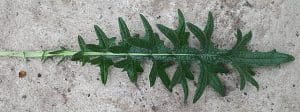
Stems
The stems can be up to 1.5 metres tall, they are smooth, branched and are mostly free from wings. Each stem has up to 5 flower heads.
Flowers
The flowers form a purple to mauve inflorescence that can be up to 2cm in diameter. One of the key ID features of Thistles are the overlapping bracts (involucre) found directly below the flowers on a hard, bulbous knob. Like other thistles there is no differentiation between ray and discs florets unlike other members of the Daisy family.
Seeds
The tiny seeds are wind dispersed, they are all attached to clumps of fine hairs called pappus. They look a little like a Dandelion clock. Each plant produces over 1500 seeds.
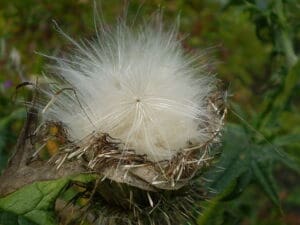
Habitat
It’s one of the most common weeds in the UK and can be found almost anywhere. Most often it’s found on waste ground and the edges of farmers’ fields. As well as growing from seed, the plants also spreads via its root system to form some very large clumps.
Known Hazards
None known.
Could be Confused with
It’s a plant most of us are familiar with and it would be hard to confuse it with anything else other than different Thistles species but they can all be used in a similar way.
Edible Uses
Believe it or not they are a tasty treat, the leaves and stems can be eaten raw as a crudité or cooked. But the spines have to be removed first. Simply cut them off with a sharp knife and peel off the outer skin. The spines on the leaves are tedious to remove and make them more effort than they are worth.
As a relative to Globe Artichokes they do produce edible ‘chokes’. The unopened flower buds can be boiled and eaten in a similar way, peeling away the bracts to get to the soft flesh inside.
If you have the landowners permission you can also eat the roots, when roasted it has a similar flavour to Burdock, but they are known to cause flatulence.
Notes on Herbal Uses
The plant is known to be high in fibre, protein, phosphorus, magnesium, calcium, copper, and zinc.
The roots is thought to have diuretic, astringent and hepatic properties. It has been chewed as a remedy for toothache. A decoction of the roots has been used to treat worms and indigestion.
Extra notes from the Foragers
If you are going to harvest Thistles go well prepared! Wear gloves and try to protect your eyes.
They are quite difficult to process but they are worth the effort.
The fluffy seeds make a great tinder for fire lighting and the plants are a very important food source for birds, insects and small mammals. It is one of the top nectar producing plants in Britain
References:
https://en.wikipedia.org/wiki/Cirsium_arvense
http://www.naturalmedicinalherbs.net/herbs/c/cirsium-arvense=creeping-thistle.php



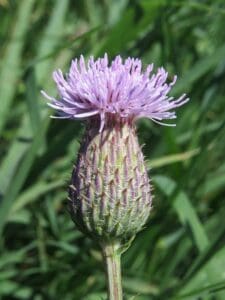
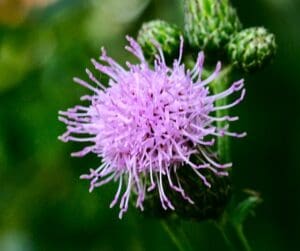
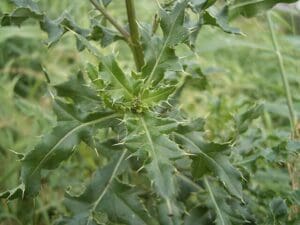
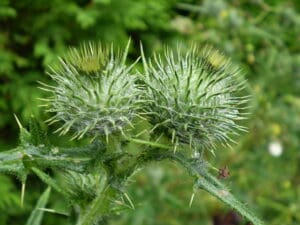
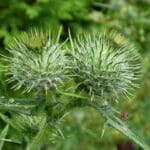
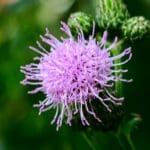
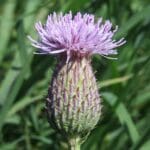



Leave a Reply
You must be logged in to post a comment.